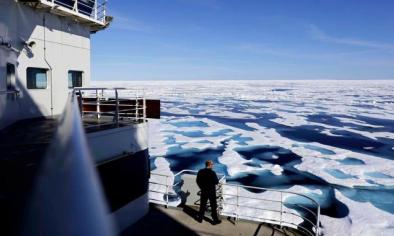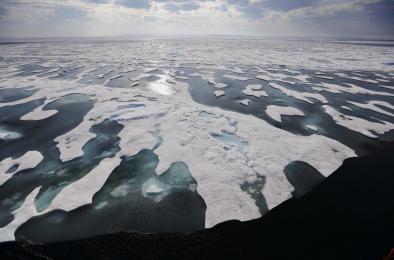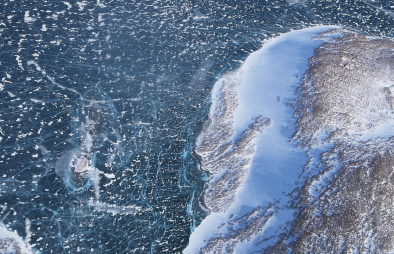Science Source
Distribution and trends in Arctic sea ice age through spring 2011
- Analyzes a satellite‐derived record of sea ice age for 1980 through March 2011, which shows continued net decrease in multiyear ice coverage in the Arctic Ocean, with particularly extensive loss of the oldest ice types
- Finds that the fraction of total ice extent made up of multiyear sea ice in March decreased from about 75% in the mid 1980s to 45% in 2011, while the proportion of the oldest ice declined from 50% of the multiyear ice pack to 10%
- Finds that these losses in the oldest ice now extend into the central Arctic Ocean and adjacent to the Canadian Archipelago; areas where the ice cover was relatively stable prior to 2007 and where long‐term survival of sea ice through summer is considered to be most likely
- Finds that, following record‐minimum multiyear ice coverage in summer 2008, the total multiyear ice extent has increased to amounts consistent with the negative trend from 2001–2006, with an increasing proportion of older ice types
- Holds this implies some ability for the ice pack to recover from extreme conditions
- Finds the recovery has been weakest in the Beaufort Sea and Canada Basin though, with multiyear ice coverage decreasing by 83% from 2002 to 2009 in the Canada Basin, and with more multiyear ice extent now lost in the Pacific sector than elsewhere in the Arctic Ocean
Related Content
Science Source
| Bulletin of the American Meteorological Society
More-Persistent Weak Stratospheric Polar Vortex States Linked to Cold Extremes
Marlene Kretschmer, Dim Coumou, Laurie Agel et al
Headline

Jul 31, 2017 | PBS NewsHour
Arctic journey shows the glaring effects of climate change
Headline

Jul 28, 2017 | Washington Post
How loss of Arctic sea ice further fuels global warming
Headline

Jul 17, 2017 | Bloomberg
How a Melting Arctic Changes Everything: Part I


